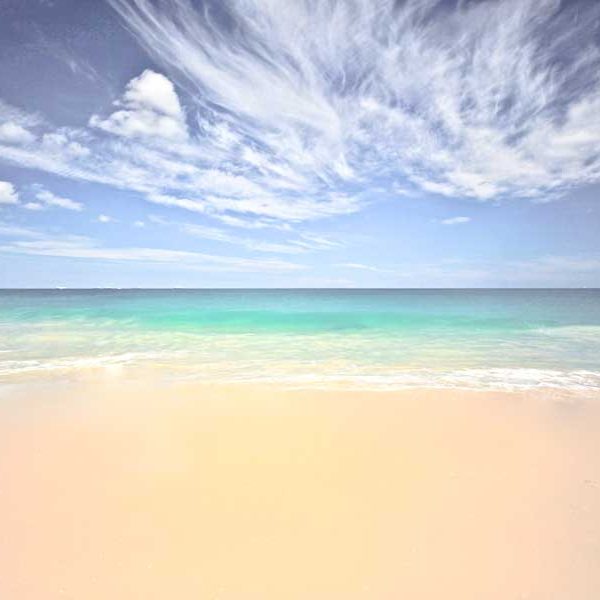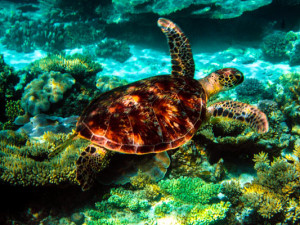Great Barrier Reef Scuba Diving Information and best diving reef information here
One of the Seven Natural Wonders of the World, the Great Barrier Reef is the world’s largest coral reef system.
Composed of over 2,900 individual small reefs that stretch over 2,300 kilometres covering an area of around 344,400 square kilometres, the Great Barrier Reef can actually be seen from outer space and is the world’s largest single structure made by living organisms.

The reef also has over 900 islands, varying from small, sandy cays to large, rugged continental islands rising as high as 1,100 metres above sea level.
Located in the Coral Sea right of the coast of Queensland, Australia, the reef was selected as a UNESCO World Heritage Site in 1981.
The reef has also been named an icon of Queensland by the Queensland National Trust.
The majority of the reef is protected by the Great Barrier Reef Marine Park, which helps protect the reef from wear due to excessive fishing or excessive tourism activities around the reef.
With that being said, the Great Barrier Reef is a very popular destination for visitors to the Queensland coast and there still are a large number of tours and opportunities for visitors to experience and explore the reef.
In fact, tourism in and around the Great Barrier Reef is an industry that brings in an excess of $3 billion per year.
Visitors to the reef can enjoy any number of experiences, including snorkeling, scuba diving, aircraft or helicopter tours, bare boats, glass-bottom boat viewing, semi-submersibles, educational trips, cruise ship tours, whale watching, and swimming with dolphins.
The sheer amount and diversity of wildlife in the Great Barrier Reef is sure to fascinate any visitor. 
There are over 1,500 species of fish, 400 species of coral, 4,000 species of mollusk, some 240 species of birds, as well as a number of sponges, anemones, marine worms, crustaceans, and other species.
The Great Barrier Reef contains more biodiversity than any other World Heritage Site in the world.
If the sheer natural beauty of the reef and its incredible biodiversity wasn’t enough to make the Great Barrier Reef a treasure, it has long been a central aspect to the lives of Aboriginal people in the area and the Torres Island Strait Islanders.
This historical aspect of the reef often goes overlooked as its sheer beauty and its many creatures overshadow it.
Should this aspect of the reef be of interest to you, there are a number of tours that will inform visitors on the Aboriginal presence in the Great Barrier Reef area and the important role the reef played, and continues to play, in their life.
As the reef is so large, here is some information about some of the more popular locations to visit, as well as  some of the hidden gems you might not have heard of.
some of the hidden gems you might not have heard of.
The Cod Hole and the Ribbon Reefs: Peace and Tranquility at one of the Great Barrier Reefs Premier Diving Locations
The Ribbon Reefs are a long string of narrow reefs also referred to as the Northern Reefs.
As you might expect, they are located in the northern portion of the Great Barrier Reef, about 60 kilometres north of Cairns.
There are 10 different small reefs within the Ribbon Reefs that are numbered 1-10 from the southernmost one to the northernmost one.
The area is relatively remote, but still easily accessible, which makes the Ribbon Reefs a very popular diving location.
The visibility in the Ribbon Reefs is consistently better than the portions of the reef closer to the cities and the coastal areas.
Additionally, the average day boat is not travelling that far off shore, thus meaning the Ribbon Reefs get much less visitation than other parts of the reef. The only tours heading to the Ribbon Reefs are explicitly for diving.
In fact, the Ribbon Reefs are home to one of The Cod Hole, one of the world’s most well known dive sites.
Located near the Ribbon Reef number 10, at the far northern portion of the reef, the site got its name from the roughly 12 potato cod that live in the area.
The potato cod in the area can weigh 150 kilograms, or more, and divers are allowed to feed the cod, which is what has made this a popular dive site since it was popularized around 20 years ago.
The cod are accustomed to divers and are very friendly.
They will even swim right up to you, making this the perfect opportunity for an underwater photo with a fish as large as you. There are five dive operators with access to the Ribbon Reefs, and all of them offer wonderful tours to the area.
Mostly based from Cairns or Port Douglas, tours in these area are usually multi-day, due to the amount of time it takes to get to the Ribbon Reefs.
Should you decide to base yourself in Cairns, a tour to the Ribbon Reef will require spending a night on a boat in order to reach the reef.
Coral Sea: The Home of the Great Barrier Reef
The Coral Sea is the marginal sea off the east coast of Australia in which the Great Barrier Reef sits.
The sea is characterized by its warm and stable climate and the area is known for frequent rains and tropical cyclones.
Considering the  majority of the Great Barrier Reef is located in the Coral Sea, it is hard to make a trip to the reef without also seeing the Coral Sea.
majority of the Great Barrier Reef is located in the Coral Sea, it is hard to make a trip to the reef without also seeing the Coral Sea.
As such, there are huge number of tours, trips, adventures, cruises, an other excursions in the Coral Sea that will take you to fascinating portions of the reef and allow visitors to see all the beautiful marine life the Great Barrier Reef has to offer.
The Coral Sea is truly the home of the Great Barrier Reef and visitors to the sea can see, explore, and experience so much of what the Great Barrier Reef has to offer from within its waters.
Lizard Island: A Diver’s Paradise with Easy Access to World-Class Dive Sites. See More info at:
Set right in the northern Great Barrier Reef, Lizard Island is home to a few of its own fringing reefs, making it an ideal place for visitors to both visit as well as stay during their excursion to the reef.
Home to its own beautiful resort, the island is also able to offer divers both half-day and full day dive trips to some of the reefs premier dive sites that are only a short boat ride away.
Whether you are hoping to dive in the inner or outer reef, or both, Lizard Island has you covered. There are even trips offered to the famous Cod Hole from Lizard Island.
Likewise, there are also night diving options from Lizard Island that allow divers to see the reef from a whole new perspective.
With a black light, the marine life in the reef emits a fluorescent glow that makes for a truly beautiful experience. Never dove before, Lizard Island also offers a beginners diving course so you can learn.
Divers 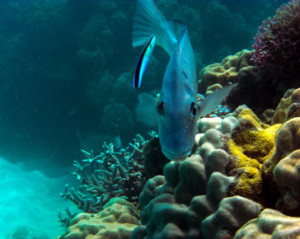 can expect to see a variety of coral, fish, including potato cod if you go on the Cod Hole Trip, rays, and a whole lot more around Lizard Island.
can expect to see a variety of coral, fish, including potato cod if you go on the Cod Hole Trip, rays, and a whole lot more around Lizard Island.
If you want a break from diving, the resort at Lizard Island offers a variety of resort amenities, including fine dining and a full service spa.
Heron Island: Island Seclusion Right on the Great Barrier Reef. See more info at:
Located 80 km northeast of Gladstone, Queensland, Heron Island is a coral cay with a fringing platform reef of significant biodiversity.
This fringing reef supports about 900 of the 1,500 species of fish as well as 72% of the coral species found on the Great Barrier Reef.
The island is a World Heritage Listed Marine National Park. As such, all the flora and fauna on the island is protected, making Heron Island a nature lover’s paradise.
As you might expect from an island on the Great Barrier Reef that literally sits on its own reef, it is also a very popular diving location as visitors to the island can literally dive right off the shore and be on the reef.
However, if you can stand a 15-minute boat ride, you can find yourself at over 10 of Australia’s most renowned dive sites, with more than 20 accessible from the island.
The waters around the island are known for the presence of friendly Green and Loggerhead Turtles, as well as any number of other marine creatures.
In addition to the wonderful reef access, the island is home to a variety of land dwelling creatures, including heron, which is from which the island derives its name.
The dense forests on the island are also home to a variety of other birds, including Noddy Terns and Shearwater Mutton Birds.
The Heron Island Resort makes Heron Island the perfect place to base your Great Barrier Reef adventure.
Located on the secluded and quiet island, the island is only for guests, meaning you won’t run into any day-trippers, only fellow reef adventurers, or relaxation seekers.
secluded and quiet island, the island is only for guests, meaning you won’t run into any day-trippers, only fellow reef adventurers, or relaxation seekers.
The resort offers a number of amenities, including a full-service spa and a restaurant.
Thursday Island: Great Barrier Reef Access and Fascinating Indigenous History
Thursday Island is located in the Torres Strait around 39 kilometres north of the Cape York Peninsula in Queensland, Australia.
Thursday Island is an ideal location for fishing enthusiasts visiting the reef as the waters around the island provide some of the best fishing you will find in Queensland.
Whether you want to fish, dive, or just explore the reef, there are a number of tours on offer from Thursday Island that will meet your needs.
Thursday Island is also known for being the cultural and administrative centre of the Torres Strait, home to the Torres Strait  Islanders.
Islanders.
As such the island is filled with historical areas and museum where visitors can learn all about the indigenous island people, making this the perfect destination for visitors who want to learn more about indigenous people’s relationship with the reef.
The Torres Strait Historical Museum and the Gab Titui Cultural Centre are both particularly fascinating destinations.
The island is accessible by plane from Cairns or Bamaga, or by boat fro Bamaga.
The island is full of modern accommodation options for visitors looking to make Thursday Island their Great Barrier Reef home base.
Green Island: Tropical Rainforest Escape Right on the Great Barrier Reef: See more info at:
Green Island is a 6,000-year-old coral cay that sits on its own, “inshore patch reef.” Located just 27 kilometres from Cairns, Green Island is very accessible for a day trip on the reef from Cairns, or as a home base for a Great Barrier Reef adventure.
From the island, visitors can enjoy glass-bottomed boat cruises, cruises, snorkeling, or scuba diving.
The reef surrounding Green Island boasts seagrass beds that are home to a variety of young fish, sea turtles, and even the rare and endangered dugong, which feeds on the seagrass.
The reef surrounding Green Island is also home to 190 different types of hard corals and over 100 types of soft corals.
If you want to enjoy an aerial view of the reef, there are helicopter trips over the reef offered from Green Island. A helicopter tour is a great way to view the reef from a different perspective and to appreciate the sheer size of the Great Barrier Reef.
In addition to the reef attractions, visitors to Green Island can also enjoy the only coral cay on the Great Barrier Reef to have a rainforest growing on it, which allows for a number of flora and fauna to call the island home.
There are over 55 species of bird regularly seen on Green Island, with 15 types regularly nesting on the island.
of bird regularly seen on Green Island, with 15 types regularly nesting on the island.
Additionally, Green Island is the home of the Green Island Resort, which offers a variety of different services to visitors, including dining and spa services.
Raine Island
Raine Island is a vegetated coral cay located in the far northern portion of the Great Barrier Reef around 620 kilometres north-northwest of Cairns and about 120 kilometres east-northeast of the Cape York Peninsula.
The island is home to the world’s largest population of green turtles and as such, has been deemed an important architectural icon and is totally protected from public access.
With that being said, the area around the island provides some of the best diving sites in the Great Barrier Reef area.
The turtles are the main attraction to the area, which tens of thousands of adult female green turtles coming to the island each year to nest.
This population of turtles is genetically different from green turtles elsewhere in the world as they have long isolated themselves from other green turtle populations in the world.
While the island is not accessible to the public, the abundance of turtles in the area mean that divers are likely to encounter a few turtles during their dives.
In addition to the turtles, the reefs around the island are teeming with marine life, that makes for fascinating diving conditions.
To top it all off, the area is home to a number of shipwrecks, including the HMS Pandora, which make for intriguing and haunting dive sites.
 Despite not being accessible to the public, Raine Island itself also has some attractions that might interest visitors to the area. In addition to being an important turtle habitat, it is also a significant bird rockery.
Despite not being accessible to the public, Raine Island itself also has some attractions that might interest visitors to the area. In addition to being an important turtle habitat, it is also a significant bird rockery.
There are 84 species of bird that have been recorded at Raine Island, with some species of sea bird present on the island not being found anywhere else in the Great Barrier Reef area.
There are 16 species that are known to breed on the island, including the endangered Herald Petrels, red-tailed tropicbirds, brown, red-footed, and masked boobies, nankeen night-herons, and lesser frigatebirds.
Also, the oldest European structure in the northern tropics of Australia is located on Raine Island. A large stone beacon constructed by convicts was built in 1844 and remains on the island.
The beacon, which is 14 metres tall and visible from sea, was never lit. Additionally, the island has been a historically important location for a variety of maritime Aboriginal groups and the Torres Strait Islanders, who used the island for its resources as well as its reef access.
Magnetic Island: Island Escape with Easy Access to Townsville and the Great Barrier Reef: See more info at:
Magnetic Island is located around 8 kilometres offshore of Townsville in Queensland, Australia.
The island has a large national park, which covers around 27 square-kilometres and is filled with a wide variety of native wildlife, as well as a huge network of walking tracks.
These tracks can allow visitors who love a good nature walk to trek from bay to bay, beach to beach, and to a number of historical destinations, such as multiple World War II forts.
The island is a popular holiday destination, with a variety of different hotels, resorts, bed and breakfasts, backpacker’s hostels, campgrounds, and caravan parks for guests to choose from.
There are also a number of entertainment options for visitors.
The island has a number of beaches and bays, including Horsehoe Bay and Picnic Bay.
Horseshoe Bay is home to the very popular Forts Walk while Picnic Bay is home to the renowned Country Club in Picnic Bay, which is an excellent golf course famous for being the course where Greg Norman first played.
where Greg Norman first played.
If you are looking for a good, old-fashioned party, then enjoy the Magnetic Island Full Moon Party.
Hosted every month, this party draws up to 3,000 people to the island to gather and dance on the beach until the sun rises.
However, if you are coming to Magnetic Island, you are likely coming for the water and the easy access to the Great Barrier Reef.
There are a variety of watersports available at Magnetic Island, including waterskiing and sea kayaking, which are among the most popular.
Various operators on the island also offer a wide variety of tours and excursions to the reef. These tours allow visitors will be able to experience and explore the reef in any way they could imagine.
Whether you want to dive or snorkel in and around the reef, view the wildlife from the comfort of a glass-bottomed boat, or take it all in from the skies on a helicopter or seaplane tour, there is something for you at Magnetic Island.
During the summer months, visitors to the island don’t even need to leave the land to enjoy the native wildlife. The island is a popular nesting ground for sea turtles during the summer.
Swains Reef: World-Class Fishing and Diving in one of the Great Barrier Reef’s Hidden Gems
 The Swains Reef Complex is located off the coast of Queensland, Australia.
The Swains Reef Complex is located off the coast of Queensland, Australia.
The area is a myriad of reefs and is a particularly fantastic fishing location.
A number of operators run fishing charters in the area where fishers can catch any number of “normal” sized and big game fish, including, Red Emperor, Coral Trout, Cod, Sweetlip, Parrot Fish, Mackerel, Tuna, and Wahoo.
From the Port of Gladstone, visitors will have to endure an overnight boat trip out to the Swains Reefs, but it will be well worth the wait. While the fishing may be more well renown, where there are reefs, there is also fantastic diving.
The Swains Reef Complex has some spectacular drop offs, beautiful sheltered coral gardens.
The Swains are a lesser known, and therefore less busy, reef complex, thus providing divers the opportunity to explore and experience the reef in relative peace. Divers can expect to see the same variety of fish that those who visit the area wish to catch, as well as a variety of corals.
Flinders Reef: Queensland’s Most Popular Dive Site Just 5 km from Cape Moreton
Flinders Reef is a small, isolated reef 5 kilometres northwest of Cape Moreton in southeast Queensland, Australia. The nearest true coral reef to Brisbane, Flinders Reef has the highest number of coral species of any sub-tropical reef system along Australia’s east coast.
The reef is protected as part of the Moreton Bay Marine Park and is regarded as one of Queensland’s most popular dive sites. Divers at Flinders Reef have the opportunity to see over 175 different fish species, including schools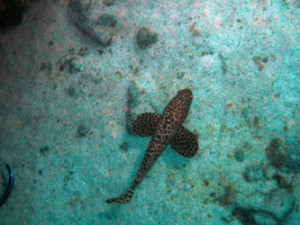 of Wrasse, Sweetlip, Trevally, Parrot, Bat, Surgeon, and Sea Turtles.
of Wrasse, Sweetlip, Trevally, Parrot, Bat, Surgeon, and Sea Turtles.
Divers can also encounter some larger marine life in the form of Manta Rays, Wobbegongs, and Leopard Sharks.
If you are visiting between June and September, you might even get to catch a glimpse of a migrating humpback whale. There are also over 112 different types of coral, including brain, staghorn, plate, and a number of other hard corals, in addition to a variety of soft corals, gorgonians, sponges, and sea whips.
As if the marine life wasn’t enough, the reef also boasts a number of walls, gutters, caves, and pinnacles that all come together to make Flinders Reef a truly spectacular dive site.
There are a number of operators who run tours and expeditions out to Flinders Reef and its proximity to Cape Moreton and Brisbane make the reef very easily accessible.
Where to Stay
Visitors to the Great Barrier Reef will also find a number of fantastic destinations from which to base their Great Barrier Reef Adventure.
There are the coastal towns on the Queensland mainland with easy access to the reef, such as Port Douglas, Cairns, Rockhampton, Townsville, and Port Airlie, which all offer a number of attractions, in addition to their easy reef access.
If you really want to be out there on the reef, stay on one of the Whitsunday Islands that is lucky enough to have the reef right outside their doorstep, such as Bedarra, Brampton, Daydream, Dunk, Fitzroy, Great Keppel, Green, Haggerstone, Hamilton, Hayman, Hinchinbrook, Lindeman, Lizard, Long, and South Molle Islands.
These islands come in a variety of different sizes, boasting accommodation ranging from rustic bungalows and eco-lodges to luxurious, exclusive resorts. No matter where you stay, accessing the reef will be easy.
There are around 820 operators with 1,500 vessels licenses to operate in the Great Barrier Reef Marine Park, making access to the reef easy and as affordable or as luxurious as you want it to be.
Whether you want mainland amenities, or island access and luxury, there is something for every taste and every budget around the Great Barrier Reef.
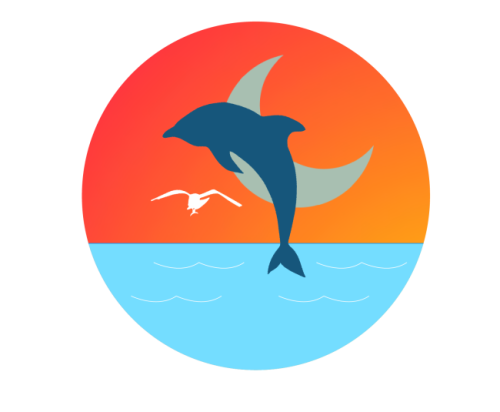 TravellerHints!
TravellerHints! 

